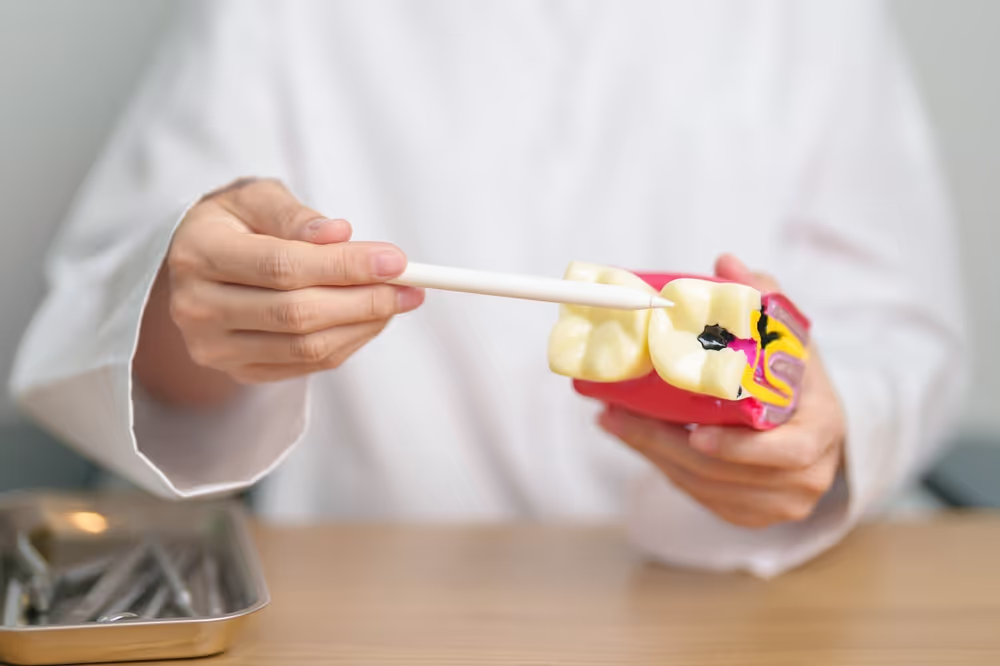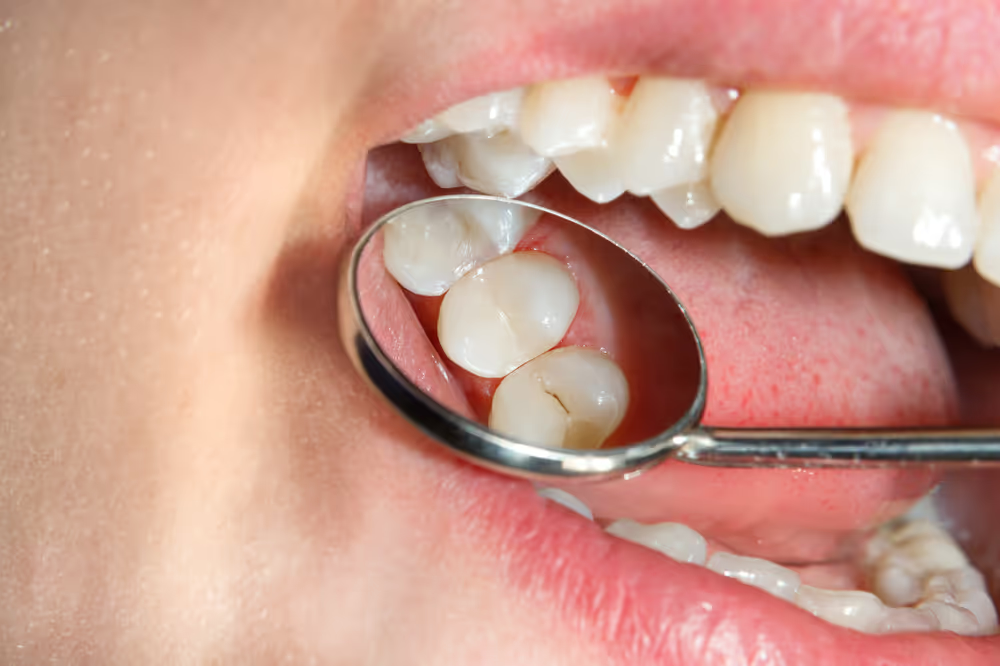

At Marius Street Family Dental, we understand that a cavity is more than just a hole in a tooth—it’s a symptom of an underlying disease: tooth decay. Tooth decay is caused by acid-loving bacteria that thrive in the presence of sugary foods, poor oral hygiene, and other lifestyle factors. While a filling can restore the function and appearance of a tooth, addressing the cause of the decay is just as important as treating the symptom.
That’s why we are committed to providing not only high-quality, durable dental fillings but also personalized advice on preventing future cavities and improving your overall oral health.
Dental fillings are the most efficient and affordable way to restore teeth that have been damaged by decay. When a cavity forms, the decayed portion of the tooth is carefully removed, and the tooth is rebuilt with a material that seals the tooth from further damage.
We use composite resin matched to your tooth colour for the majority of our restorations. This means our fillings are not only a practical solution to repair underlying damage, but your tooth looks great afterwards.

Decay is an underlying mineral imbalance in the mouth where the teeth are losing more mineral then they are getting back. Holes in your teeth are just a symptom of this disease. Doing the best fillings for you is still just addressing the symptom. We want to take a prevention-focused approach and work with you through:
A typical filling starts from $195 and goes up to $350 depending on the complexity.
If they are to increase the height of the tooth or improve the appearance (composite veneer) these can be more as they are much more complicated than just recreating what you currently have.
The good thing about white fillings is that they are bonded to your tooth, which means we can save tooth structure and don't have to cut mechanical retention into your tooth. They also have less risk of causing fracture than silver fillings.
The main advantage is that they do not contain mercury which is better for your health and better for the environment.
Unfortunately, nothing lasts forever. How long white fillings last depends on a few things: How big the filling is (more accurately how much good tooth structure you have left supporting it), your bite, whether you grind or clench, and, most importantly, if you address the underlying reasons for decay. The join between your tooth and the filling needs to be kept as clean as possible so bacteria can't build up here. We recommend regular check-ups so we can check these margins for more decay getting under the filling, as, over time, the bond breaks down.
The statistical average is 7 years - lets work together to beat the statistics by addressing those underlying reasons for failure.
The answer is - it depends! We will assess your case and give you our recommendation. Sometimes less treatment is better - we do not recommend a blanket rule of replacing all amalgams like some dentists.
Most people are concerned about the mercury content. However, during the setting, the mercury actually gets attached to the other metals and thus becomes inert. There have been many studies done which show the exposure is extremely minimal and even with every tooth filled with amalgam, the mercury released is well below toxic. The times when mercury exposure is highest is actually during placement of the filling, and during removal (due to the heat generated by the drill). Thus, we don't generally recommend filling removal simply because it is a silver filling. If you are concerned, please mention this and we will explain what measures we can take to reduce this, such as using a rubber dam, maximising water to cool the drill, and using the high speed evacuator.
We may recommend replacement if we see cracks around it. Why does amalgam stress your tooth? A few reasons. Firstly, amalgam doesn't bond to the tooth. Therefore, to make it stay in we actually have to cut mechanical retention into your tooth which is more destructive to your tooth structure. The tooth preparation has angles which puts stress at certain points of the tooth rather than distributing the force. Lastly, amalgam expands and shrinks in heat and cold differently to your tooth, which over time, can create cracks in the tooth.
Call us at (02) 6766 1766 or book online to schedule your consultation. Whether it’s a simple check-up or more complex issue, our experienced team is here to help. Let us take care of your smile with the compassion and expertise you deserve!